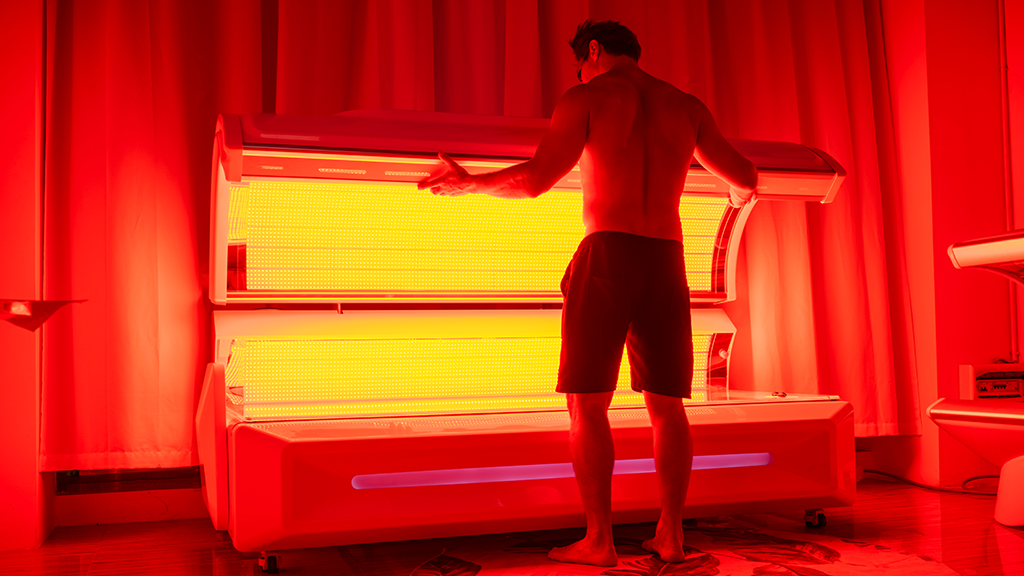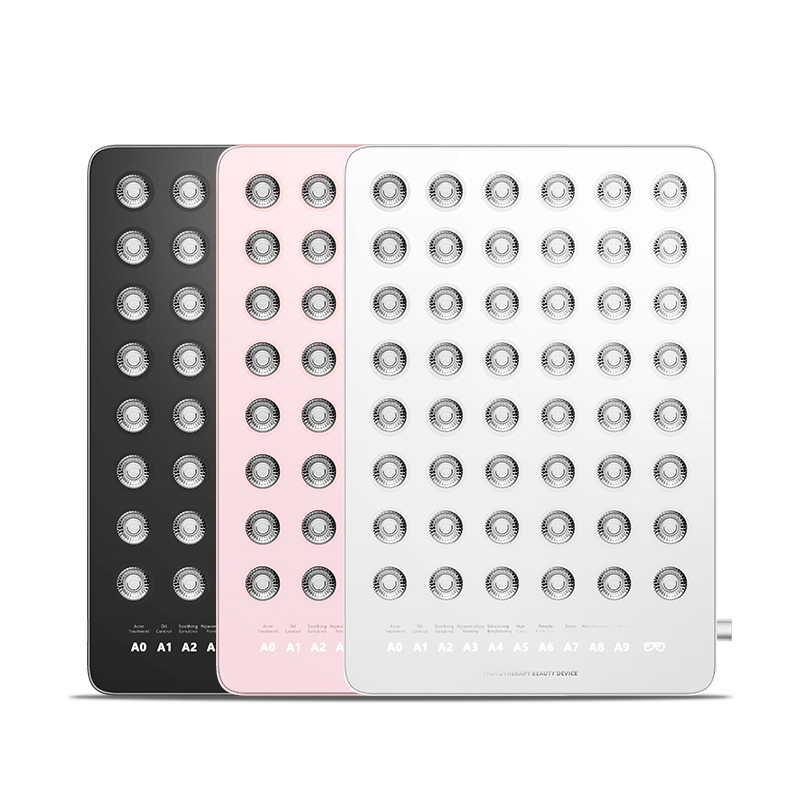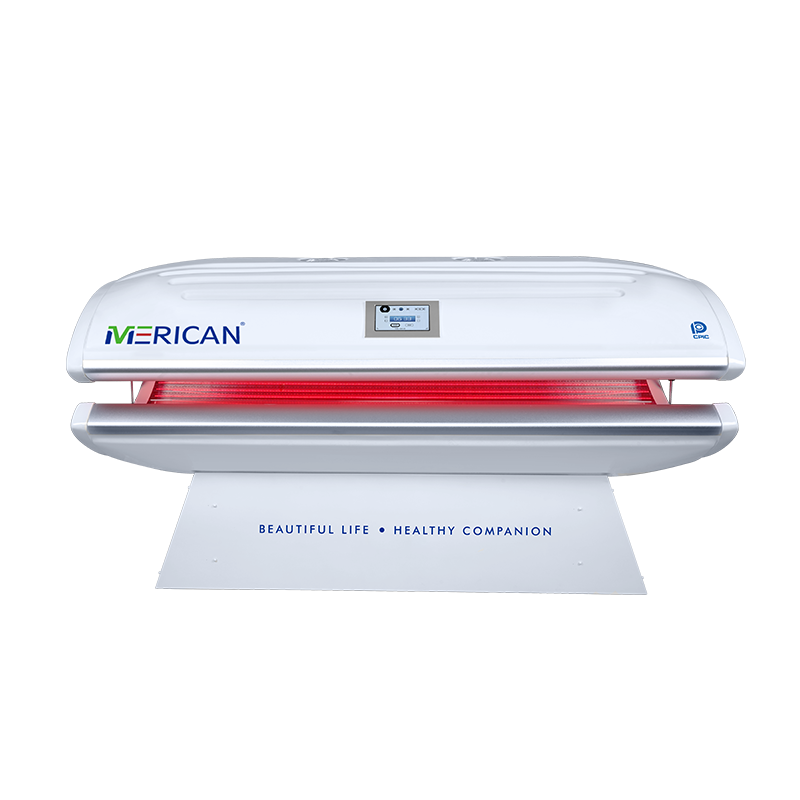Que la lumière soit - pour ta douleur, peau, et blessures, c'est. Les possibilités de la lumière rouge pour traiter une variété de problèmes de santé et d’esthétique commencent tout juste à émerger grâce à l’intérêt des chercheurs, universités, et les hôpitaux, ainsi que des appareils domestiques qui le rendent plus accessible.
Thérapie par la lumière rouge (RLT) est un type de photomédecine, qui est « l’utilisation de la lumière pour traiter la peau et d’autres problèmes de santé," dit Jared Jagdeo, MARYLAND, le directeur fondateur du Centre de photomédecine de la SUNY Downstate Health Sciences University à Brooklyn, New York.
Ici, découvrez l'histoire de la thérapie, Comment ça marche, ses avantages potentiels, à quoi s'attendre du traitement, Et plus.
Histoire de la thérapie par la lumière rouge
Il existe un autre terme pour la luminothérapie, et c'est la photobiomodulation (ou PBM pour faire court), dit Praveen Arany, Doctorat, DDS, professeur agrégé à l'Université de Buffalo et directeur par intérim du Centre d'excellence pour la photobiomodulation de l'Université Shepherd à Shepherdstown, Virginie occidentale. D'autres termes pour la même chose sont traitement au laser de faible intensité. (LLT), photostimulation, et traitement au laser froid, il dit.
La luminothérapie existe depuis plus de 50 années. Il a été découvert par le médecin hongrois Endre Mester dans les années 1960, lorsque des expériences scientifiques avec des lasers rouges sur des rats ont conduit à la croissance des poils et à la cicatrisation des plaies., selon un article de recherche publié en décembre 2017 dans le Journal de Biophotonique. Au fil des années, la luminothérapie était largement considérée comme fausse. Mais avec de nouvelles recherches (certains contradictoires), la communauté scientifique a commencé à en prendre conscience.
« En ce moment aux États-Unis, La thérapie par la lumière rouge est toujours considérée comme une science non conventionnelle. Mais de plus en plus de centres universitaires et cliniques adoptent la technologie et la mettent à la disposition des patients.," Docteur. L'or dit.
Il existe désormais des centres, comme celui de l'Université Shepherd, dédié à la formation des professionnels de la santé et des scientifiques sur la légitimité du PBM en tant que traitement clinique, ainsi que les organisations professionnelles, comme l'Association nord-américaine pour la thérapie par photobiomodulation(CLOU) et la Fondation PBM. L’une des utilisations les plus populaires de la thérapie par la lumière rouge concerne les soins de la peau., et la disponibilité d'appareils domestiques abordables a accru sa popularité.
Comment fonctionne la thérapie rouge
La photobiomodulation utilise la lumière dans des longueurs d'onde spécifiques. C'est entre 400 nanomètres (nm) (bleu) jusqu'à 1,200 nm (proche infrarouge), dit Gold. La lumière rouge a des longueurs d'onde comprises entre 620 à 750 nm, selon le Centre National de Recherche Atmosphérique. C'est de la lumière visible.
Bleu, vert, et la lumière rouge ont toutes été utilisées efficacement pour le traitement PBM, il dit. Lumière proche infrarouge, qui est une lumière de longueur d'onde plus longue (jusqu'à 1,200 nm), est également utilisé dans le PBM et est disponible dans les saunas infrarouges. Bien que cette lumière puisse apparaître rouge, en réalité, la lumière infrarouge n'est pas visible et chauffe le corps de l'intérieur pour provoquer des changements physiologiques.
Thérapie par la lumière rouge, en particulier, a gagné en popularité ces dernières années et est peut-être le plus connu et le plus facile d'accès. « Les dispositifs à lumière rouge sont plus faciles à fabriquer et sont largement disponibles,L'or dit.
Alors comment ça marche? Quand les photons (particules de lumière) sont placés près de la peau, ils pénètrent dans les tissus et activent les chromophores (une partie d'une molécule qui lui donne sa couleur), qui déclenche des changements dans les cellules, selon l'American Society for Laser Medicine & Chirurgie. En outre, la thérapie par la lumière rouge affecte également les mitochondries (la centrale des cellules), générer de l'ATP (énergie) pour favoriser la guérison, note la Fondation PBM.
Pour que la thérapie par la lumière rouge fonctionne, des protocoles et des dosages spécifiques doivent être utilisés, en fonction de votre problème de santé, c'est pourquoi un praticien compétent est si important, dit Gold. Si possible, rechercher ce traitement dans un hôpital, université, ou en milieu clinique. Il déconseille la thérapie par la lumière rouge dans les salons ou les spas.
Les appareils à lumière rouge peuvent être achetés et utilisés à la maison pour les soins de la peau, et ceux-ci sont généralement sûrs à utiliser comme indiqué, dit le Dr. Jagdéo.
Les appareils de thérapie par la lumière rouge comportent des lumières rouges à LED utilisées comme appareils portables, Panneaux LED, ou lits doubles, selon la raison du traitement. Certains appareils utilisent à la fois des lumières rouges et proches infrarouges, mais en général, il n'existe pas différents types de thérapie par la lumière rouge.
Types de thérapie par la lumière rouge
Les appareils de thérapie par la lumière rouge comportent des lumières rouges à LED utilisées comme appareils portables, Panneaux LED, ou lits doubles, selon la raison du traitement. Certains appareils utilisent à la fois des lumières rouges et proches infrarouges, mais en général, il n'existe pas différents types de thérapie par la lumière rouge.
Avantages possibles de la thérapie par la lumière rouge
Alors que la recherche est prometteuse sur la thérapie par la lumière rouge, il existe encore des études contradictoires – et certaines ne montrent aucun bénéfice pour certains problèmes de santé. En général, les études ont besoin de plus de normalisation à tous les niveaux (en dosage et en timing) en fonction de la condition, les scientifiques et les praticiens doivent comprendre pleinement la gamme d'avantages de la thérapie par la lumière rouge.. Vous trouverez ci-dessous des utilisations prometteuses potentielles de la thérapie par la lumière rouge, selon les experts.
Améliore un aspect jeune de la peau
L’un des avantages les plus souvent cités de la thérapie par la lumière rouge réside dans ses effets sur la peau.. Il peut être utilisé pour répondre:
Acné
Ridules et rides
Croissance des cheveux
Rougeur
La thérapie par la lumière rouge diminue l’inflammation pour traiter les rougeurs, acné, et la pousse des cheveux, permettant également aux traitements topiques ou oraux pour ces conditions de fonctionner encore mieux, dit Jagdeo. En outre, quand il s'agit de bannir les éruptions cutanées, "La thérapie par la lumière rouge augmente nos défenses immunitaires contre les bactéries associées à la formation de l'acné,» ajoute-t-il. Pour les rides et ridules, ces traitements ciblent les enzymes associées à la dégradation du collagène et stimulent la production de collagène, selon la Cleveland Clinic
Aide à la réadaptation après une blessure sportive
Être mis à l'écart à cause d'une blessure est extrêmement difficile mentalement et physiquement, mais la thérapie par la lumière rouge peut vous aider à vous remettre sur pied. « La lumière rouge peut être utilisée pour améliorer les performances des muscles squelettiques, réduire la douleur, et améliorer la récupération après une blessure,dit Gold. Les auteurs d'une revue publiée en décembre 2021 dans la revue Life a noté que le PBM pourrait être utilisé à la fois dans la rééducation des blessures sportives, et pour améliorer les performances sportives, même si des recherches supplémentaires sont nécessaires.
Aide à guérir les blessures
Que vous ayez un ulcère dans la bouche ou une plaie ouverte au pied, Il a été démontré que les propriétés anti-inflammatoires de la lumière rouge améliorent la capacité de guérison du corps., dit Gold, qui a publié une critique en avril 2019 dans Advances in Skin and Wound Care sur le sujet. « Les recherches menées dans mon laboratoire montrent que le PBM peut activer un puissant facteur de croissance qui favorise la cicatrisation et la régénération des tissus.," il explique, quelque chose qui pourrait être particulièrement important pour les plaies buccales, la recherche a montré.
Réduit la douleur
La douleur est notoirement difficile à traiter, mais la luminothérapie peut être un outil viable pour aider. « La lumière rouge agit sur les neurones qui transmettent la douleur,dit Gold.
La lumière rouge peut être meilleure pour certains types de douleur que pour d’autres, selon une revue récente publiée en juillet 2022 dans le Journal de la Douleur. Les auteurs ont noté qu'il existe des preuves de l'efficacité de la lumière rouge dans le traitement de douleurs telles que la fibromyalgie., hypotension artérielle chronique, arthrose, et neuropathie.
Diminue les effets secondaires du traitement du cancer
Lorsqu'il est utilisé à titre préventif avant une chimiothérapie ou une radiothérapie, la thérapie par la lumière rouge peut aider à réduire les effets secondaires, comme la douleur, et leur gravité, dit Gold, bien que davantage d'études humaines soient nécessaires pour comprendre pleinement cet avantage.
Par exemple, une étude sur des souris, publié en décembre 2021 dans la revue Photonics, ont découvert que la thérapie par la lumière rouge et le proche infrarouge réduisait la gravité des lésions cutanées causées par les radiations et améliorait la capacité de la peau à guérir. Ceci est une étude animale, bien que cela ouvre la voie à des recherches plus nécessaires.
D'autres recherches antérieures ont également montré que le PBM réduisait le gonflement et l'inflammation des tissus buccaux chez les personnes atteintes d'un cancer de la tête et du cou., même si des études supplémentaires sont nécessaires.
Risques de la thérapie par la lumière rouge
La thérapie par la lumière rouge est autorisée par les États-Unis. Administration des aliments et des médicaments (FDA), selon la Fondation PBM. Il est considéré comme très sûr, dit Jagdeo, bien qu'il existe certainement un risque d'erreur de l'utilisateur si vous utilisez un appareil à la maison. Par exemple, il est possible d’abuser de l’appareil ou de l’utiliser plus fréquemment que ce qui est recommandé par le fabricant. La bonne nouvelle est que de nombreux appareils domestiques sont dotés d'une minuterie et d'un arrêt automatiques., dit Jagdeo, ce qui permet de ne pas en faire trop. Suivez toujours les instructions, et sachez que la revue Journal of Pain a noté un risque d'aggravation des symptômes de migraine pour certains utilisateurs. Il est également important de consulter le médecin approprié (par exemple votre dermatologue ou PCP) pour leur faire prendre conscience que la thérapie par la lumière rouge fait partie de votre plan de traitement. Enfin, demander un traitement à un praticien réputé. « La lumière peut causer des dommages, mais si le bon protocole est utilisé, vous ne voyez aucun effet secondaire,» dit Jagdeo.
Qui voudra peut-être essayer (et éviter) Thérapie par la lumière rouge
La thérapie par la lumière rouge est conçue comme un traitement de soutien. Signification: Il est peu probable que la thérapie par la lumière rouge soit le seul traitement que vous utiliserez pour résoudre un problème de santé ou de soins de la peau.. Par exemple, avec le feu rouge, vous pouvez également utiliser un topique (comme un rétinoïde) pour l'acné ou les ridules, note Jagdeo. Si vous êtes enceinte, vous devriez éviter la thérapie par la lumière rouge, dit Gold. Et si vous traitez une condition médicale spécifique, Obtenez d'abord l'accord de votre médecin.
Premiers pas avec la thérapie par la lumière rouge
Voici ce que vous voudrez peut-être savoir avant d’essayer la thérapie par la lumière rouge sous la direction de votre professionnel de la santé.. Généralement, la thérapie par la lumière rouge sera effectuée en une série de séances sur une certaine période de temps. Par exemple, dit Jagdeo, quand il s'agit de problèmes de peau, il recommande d'essayer la thérapie par la lumière rouge trois fois par semaine pendant 10 minutes à chaque fois pendant au moins un mois. « Certains patients verront des résultats en seulement un mois, mais souvent ces résultats continuent de s'améliorer avec le temps," dit-il. Bien que de nombreux appareils de thérapie par la lumière rouge à domicile soient disponibles à l'achat, il est toujours préférable de parler à un dermatologue ou à un spécialiste de la douleur avant d'essayer vous-même la thérapie par la lumière rouge.. Une conversation avec un professionnel de la santé qualifié vous aidera non seulement à établir vos objectifs de bien-être et à déterminer si la thérapie par la lumière rouge vous convient, mais également à trouver l'appareil domestique spécifique qui en vaut le prix..
À quoi s'attendre avant, Pendant, et après la thérapie par la lumière rouge
Cela ne fera probablement pas de mal. La thérapie par la lumière rouge est non invasive et indolore pour la plupart des gens. Un appareil portatif peut être pressé contre la peau sur le site de la blessure ou de la douleur.. Si vous êtes allongé dans un lit ou une nacelle pour tout le corps qui utilise à la fois la lumière rouge et le proche infrarouge, vous pouvez ressentir la chaleur des ampoules proche infrarouge. Vous ne devez pas vous attendre à ressentir des effets secondaires du traitement, dit Gold. Surveille tes yeux. Demander au praticien s'il est nécessaire de porter des lunettes de protection pendant le traitement. Vous pouvez vous sentir à l'aise. L’un des grands avantages de la thérapie par la lumière rouge est la façon dont les gens disent se sentir détendus après le traitement., dit Jagdeo. Considérez cette fois votre temps et penchez-vous sur les effets apaisants. Vous pourriez avoir besoin de plus d’un traitement. Parlez à votre praticien à l’avance pour comprendre de combien de séances vous aurez besoin (et à quelle fréquence), afin que vous puissiez pleinement comprendre la portée du traitement. Cela variera considérablement en fonction du problème de santé auquel vous répondez. « Dans certains scénarios, même un seul traitement s’est révélé efficace, tandis que le traitement PBM le plus intense est de trois fois par semaine pendant quatre semaines, minimum, voir un effet marquant,dit Gold. Avec tout cela dit, gardez à l'esprit que le monde de la photothérapie évolue, et des recherches supplémentaires sont nécessaires pour déterminer les meilleures utilisations des différentes longueurs d'onde, doses, et appareils pour des conditions de santé spécifiques. Il est préférable de consulter un dermatologue, spécialiste de la douleur, ou votre médecin si vous avez des questions ou avant de vous engager dans un traitement coûteux. Des conseils médicaux vous aideront à évaluer les avantages et les risques de la thérapie par la lumière rouge pour vos objectifs de santé spécifiques..
Ressources de thérapie par la lumière rouge que nous aimons
Meilleures organisations
Fondation PBMPour plus d'informations sur ce qu'est le PBM, Comment ça marche, et pour quels problèmes de santé il peut être utilisé, cette fondation est une excellente ressource. Vous pourrez également regarder des vidéos présentant des témoignages de patients qui racontent comment la thérapie par la lumière rouge les a aidés.. American Academy of DermatologyLa première association dermatologique éduque sur un large éventail de sujets relatifs aux soins de la peau, y compris sur l'utilisation de la luminothérapie pour diverses conditions, comme la rosacée, acné, et le psoriasis, offrant une approche impartiale, point de vue scientifique sur la situation de la recherche.
Meilleur centre académique
Shepherd UniversityShepherd University a récemment ouvert un nouveau centre d'excellence en photobiomodulation pour aider à faire progresser la compréhension et les progrès scientifiques en matière de photobiomodulation. (qui comprend des thérapies par la lumière rouge).
Meilleures ressources scientifiques
Photobiomodulation, Photomédecine, et chirurgie au laserVous souhaitez rester à jour sur la littérature scientifique sur la photothérapie? Consultez la revue à comité de lecture Photobiomodulation, Photomédecine, et Chirurgie au laser pour les problèmes actuels et passés sur la photothérapie, thérapie au laser de faible intensité, photobiomodulation, et la chirurgie au laser. Le Centre national pour la santé complémentaire et intégrative NCCIH est une excellente ressource pour avoir un aperçu de la position du consensus scientifique derrière les thérapies complémentaires.. Vous pouvez effectuer une recherche par sujet ou problème de santé dans leur base de données et en savoir plus sur les thérapies soutenues. (ou non soutenu) par la recherche.

























